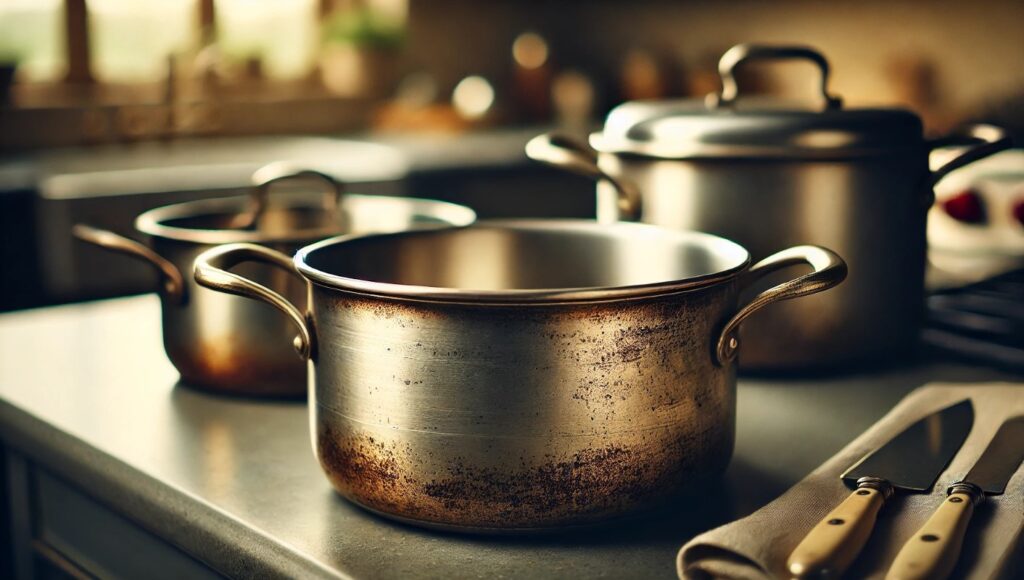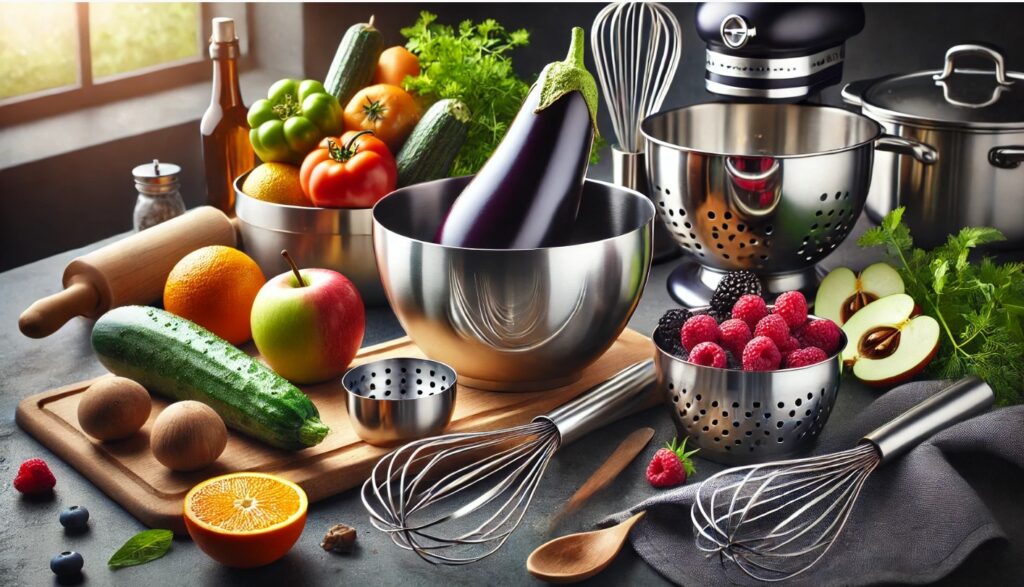Stainless steel is known for its strength, shine, and corrosion resistance. For this reason, it can be used across countless industries, from construction to kitchen appliances. However, despite its reputation, will stainless steel rust?
Yes, stainless steel can rust under certain conditions. While the metal is more resistant than ordinary steel, exposure to harsh environments and the stainless steel grade affect its susceptibility to corrosion.
To uncover whether stainless steel is entirely rust-proof, let us explore its composition, how different grades impact corrosion resistance, and the best choices for your needs.

What is Stainless Steel?
Stainless steel is a unique yet versatile metal alloy known for its excellent rust, corrosion, and staining resistance. For this reason, it sets it apart from other types of steel. Unlike ordinary steel, stainless steel does not rust easily because of its high chromium content.
The chromium forms a protective oxide layer on the surface that prevents oxidation, leading to rust and other corrosion forms.
Beyond iron and chromium, it can also contain Nickel, nitrogen, carbon, and Molybdenum, contributing to its unique properties. Chromium, in particular, is essential because it reacts with oxygen in the air to form a chromium oxide layer, blocking rust formations.
Composition And Structure
As stainless steel is primarily made from iron and chromium, the latter element typically comprises 10.5% or more of the total alloy composition. Other components like Nickel, nitrogen, carbon, and Molybdenum are often added in different amounts to enhance specific properties depending on the intended application. Here is how these components work:
- Chromium (Cr): The component is essential as it reacts with oxygen to create the protective layer known as chromium oxide. It is very durable, making it resistant to rust.
- Nickel (Ni): It adds flexibility, strength, and corrosion resistance when used in humid and acidic environments. Hence, it improves the overall appearance, leaving a shiny, polished finish.
- Molybdenum (Mo): The component helps increase corrosion resistance, mainly when used in environments with chloride or salt.
- Carbon (C): While present in small amounts, it strengthens the metal, but too much carbon can also reduce the corrosion resistance.
- Nitrogen (N): Enhances mechanical strength and resistance to pitting, especially in grades used in harsh environments.
Why Does Stainless Steel Rust?

Despite the resistance of stainless steel, it is not entirely immune to rust. Rusting can occur when the protective chromium oxide layer is compromised, allowing moisture and oxygen to contact the iron beneath. In another word, if the stainless steel surface is damaged, it can easily rust. Scratches and abrasions can both lead to rust formation on stainless steel.
Hence, the metal can rust when the protective layer is damaged, exposing the iron base to corrosive elements.
Some common causes of stainless steel rust include exposure to high humidity, harsh chemicals, mechanical damage, and saltwater. For example, stainless steel structures in coastal areas are more prone to rust because salt helps to accelerate the corrosion process.
Similarly, contact with other metals (galvanic corrosion) or abrasive cleaning can weaken the protective layer, making the metal susceptible to rust.
What Different Grades of Stainless Steel Do You Get?

You can find stainless steel in numerous grades, each with a specific composition influencing its resistance to rust and corrosion. Selecting the correct grade is essential to ensure durability in different environments.
Popular stainless steel grades include 201, 202, 304 and 316, each offering varying levels of corrosion resistance based on its unique composition.
Among these grades, 304 is the most common due to its versatility and cost-effectiveness, often used in household products and kitchenware. However, suppose you provide products exposed to environments with saltwater or acidic chemicals. In that case, 316 stainless steel is preferred due to the added Molybdenum.
Comparison Table: Stainless Steel Grades
| Grade | Composition | Corrosion Resistance | Best For |
| 304 | 18% Chromium 8% Nickel | Good for general use | Food Equipment Kitchenware |
| 316 | 16% Chromium 10% Nickel 2% Molybdenum | Excellent resistance to salt and chemicals | Martine applications Surgical tools |
| 430 | 17% Chromium No Nickel | Moderate resistance, more affordable | Home appliances Decorative trim |
| 201 | Lower Nickel Content | Lower resistance Economical | Low-cost kitchenware Automotive trim |
Among these grades, 304 is the most common due to its versatility and cost-effectiveness, often used in household products and kitchenware.
However, for environments exposed to saltwater or acidic chemicals, 316 stainless steel is preferred due to the added Molybdenum.
Lower-cost options, such as grade 201 and 202, offer decent corrosion resistance but are best suited for less demanding applications due to their reduced nickel content.
What is The Best Stainless Steel For Kitchens and Food Preparation?

It must be rust-resistant when using stainless steel in the kitchen or with food preparation. Products from grade 304 or 316 stainless steel offer food safety, durability, and easy maintenance.
The best stainless steel products for kitchens include cookware, appliances, and sinks made from 304 or 316 stainless steel for optimal rust resistance and hygiene.
Stainless steel kitchen products include utensils, pots, pans, and appliances like refrigerators and ovens. Grade 304 stainless steel is commonly used for making cookware and sinks due to its excellent corrosion resistance and non-activity, making it safe for food handling.
For products requiring heavy-duty rust resistance, such as those used in commercial kitchens, 316-grade stainless steel is your superior choice, particularly in high-moisture or salty environments.
Popular Kitchen Uses:
- Cookware: 304-grade stainless steel pots, pans, and baking sheets
- Sinks: Highly durable and resistant to corrosion, ideal for daily kitchen use
- Countertops: Easy to clean, bacteria-resistant, and long-lasting for commercial kitchens
What is The Price of Stainless Steel by Grade?
The cost of stainless steel products can vary depending on the grade used in the manufacturing process. The price of a product is evaluated by the content of Nickel and Molybdenum used in the product, as it influences the cost and corrosion resistance.
Higher-grade stainless steel, like your 316-grade, is more expensive due to increased corrosion resistance and additional elements like Molybdenum.
The price variations for stainless steel products stem from the materials used in different grades. Higher corrosion resistance grades like 316 will cost more due to the higher Nickel and Molybdenum content. These enhance the durability of using the product in challenging environments.
Here’s a brief comparison of cost implications by grade:
| Grade | Price Range (per lb) | Corrosion Resistance | Common Uses |
| 201 | Low | Moderate | Budget-friendly cookware, automotive |
| 304 | Medium High | High | Food-safe products and kitchen appliances |
| 316 | High | Very High | Medical, marine, and chemical equipment |
We recommend using high-grade stainless steel, like 304 for long-term savings due to the reduced maintenance costs. It makes for a wise investment for applications needing sustained durability.
Conclusion: How to Choose Stainless Steel For Maximum Rust Resistance
In summary, stainless steel remains a top choice if you need rust-resistant material. Still, it all comes down to selecting the correct grade for your needs. For most household applications, 304-grade stainless steel provides excellent rust resistance and is cost-effective.
For environments with frequent exposure to saltwater or harsh chemicals, investing in 304-grade stainless steel ensures longevity and minimizes maintenance. Choosing your stainless steel with appropriate care and awareness of the grades can have a lasting impact on product performance.
Whether you are selecting stainless steel for industrial equipment, kitchenware, or outdoor fixtures, it helps to understand the corrosion resistance of the different grades as it allows for a more informed, value-driven decision.
I have been in the stainless steel kitchen products industry for more than 15 years, I will be more than happy to assist you with all the questions regarding the material, products or manufacturing process. Feel free to contact me if i could provide any assistance for your projects.